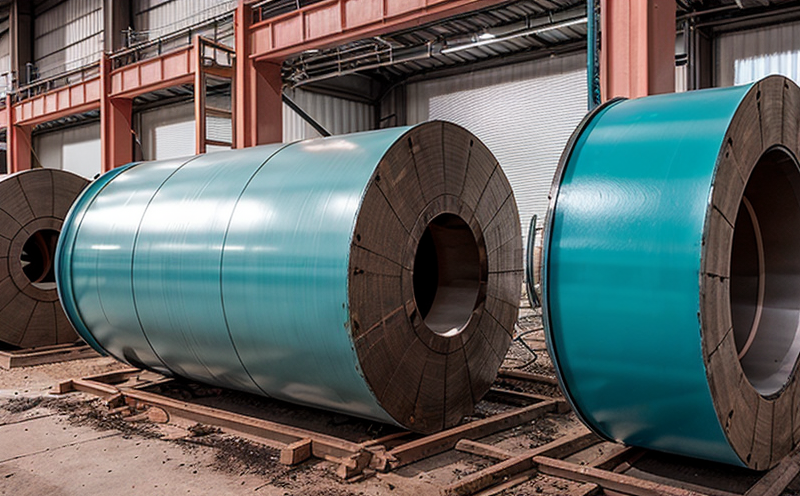ASTM G50 Atmospheric Corrosion Resistance Testing Validation Method Development Test
The ASTM G50 atmospheric corrosion resistance testing method is a validated approach used to evaluate the performance of materials under natural environmental conditions. This service focuses on developing and validating custom testing methods tailored specifically for your industrial needs, ensuring that the results accurately reflect real-world scenarios.
Developing a robust test method involves understanding the specific environmental conditions and stressors that are relevant to your manufacturing processes. For instance, if you're working with stainless steel in an automotive application, it's crucial to simulate the atmospheric exposure similar to what the material will encounter during its lifecycle. The ASTM G50 protocol allows for the customization of test parameters such as humidity levels, temperature ranges, and exposure times.
One of the key aspects of this service is specimen preparation. Materials are selected based on their expected usage within your industrial processes. This could include metals like stainless steel, aluminum, or titanium, depending on the sector-specific requirements. The specimens undergo precise surface treatments to mimic real-world conditions, ensuring that the test results provide reliable data.
The testing apparatus used in this service is state-of-the-art and adheres strictly to ASTM G50 standards. This includes climate-controlled chambers capable of simulating various atmospheric conditions. The test chamber maintains controlled humidity levels, temperature ranges, and exposure durations as per your specified requirements. Sensors within the chamber continuously monitor environmental factors to ensure accurate data collection.
Once the specimens have been exposed to the desired conditions for an appropriate duration, they are thoroughly inspected using advanced analytical techniques such as scanning electron microscopy (SEM), X-ray diffraction (XRD), and optical profilometry. These tools provide detailed insights into the corrosion behavior of materials under specific atmospheric conditions.
The validation process involves comparing the results obtained from ASTM G50 testing against actual field performance data. This ensures that the test method developed is both reproducible and predictive, providing consistent results across different batches or suppliers. The ultimate goal is to create a validated testing protocol that can be used confidently for quality assurance purposes.
By utilizing this service, you gain access to comprehensive corrosion resistance evaluation capabilities, which are essential for ensuring product longevity and reliability in harsh industrial environments. Whether you're developing new materials or validating existing ones, ASTM G50 atmospheric corrosion resistance testing offers a reliable means of assessing performance under real-world conditions.
Industry Applications
| Application Area | Description |
|---|---|
| Aerospace Manufacturing | Evaluating the long-term performance of structural components exposed to high humidity and temperature variations. |
| Automotive Industry | Assessing the durability of exterior components such as bumpers, grilles, and exhaust systems in various atmospheric conditions. |
| Offshore Oil & Gas | Testing pipeline materials for resistance against saltwater corrosion in coastal areas. |
| Construction Materials | Evaluating the durability of concrete reinforcements exposed to varying weather patterns and pollutants. |
International Acceptance and Recognition
- The ASTM G50 method is widely accepted in North America, Europe, Asia, and other parts of the world for evaluating atmospheric corrosion resistance.
- This testing protocol is recognized by international standards bodies such as ISO and EN.
- Many regulatory agencies around the globe use ASTM G50 results as a basis for compliance checks.
- The method has been adopted by leading industries including aerospace, automotive, construction, and oil & gas sectors globally.
Use Cases and Application Examples
In the aerospace manufacturing sector, ASTM G50 testing is used to evaluate the long-term performance of structural components exposed to high humidity and temperature variations. For instance, aluminum alloys commonly used in aircraft fuselage construction must withstand extreme environmental conditions during flight.
In the automotive industry, this service helps assess the durability of exterior components such as bumpers, grilles, and exhaust systems in various atmospheric conditions. By simulating real-world exposure scenarios, manufacturers can ensure that these parts maintain their integrity over extended periods without compromising safety or performance.
For offshore oil & gas operations, ASTM G50 testing is crucial for evaluating pipeline materials for resistance against saltwater corrosion in coastal areas. This ensures that critical infrastructure remains operational under harsh marine environments.
In the construction materials sector, this service is employed to evaluate the durability of concrete reinforcements exposed to varying weather patterns and pollutants. Proper evaluation helps prevent premature degradation, extending the lifespan of buildings and structures significantly.





